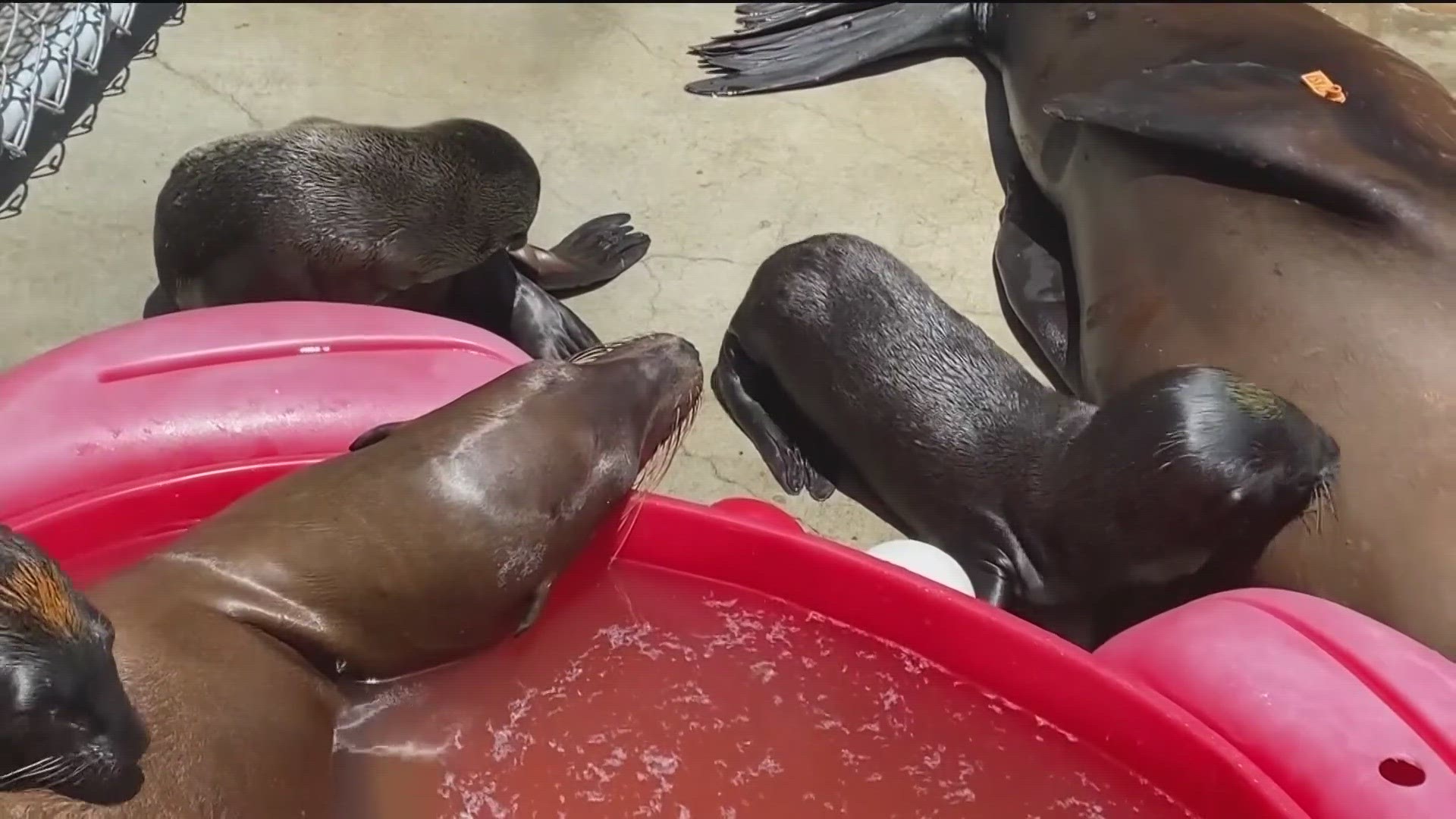SAN DIEGO — The San Diego SeaWorld Rescue Team rescued eight sea lions and one dolphin infected with a deadly toxin.
They rescued them in La Jolla, Carlsbad, and Coronado and continue to rescue more.
"They are seeing thousands of sea lions affected in Santa Barbara County and in Ventura County, and hundreds of dolphins. It trickles down to LA, OC, and then a little less in San Diego," said Kelsey Herrick, a veterinarian at SeaWorld.
Marine mammals are showing symptoms of the neurotoxin called domoic acid produced by a harmful algae bloom. The mammals eat the infected fish and this can cause the sea lion to act abnormally, and have seizures or facial twitches.
Herrick says this algae bloom occurs every year, but this is the worst case she’s seen in her 7-year career.
"Dealing with this disease can be frustrating and it can be pretty heartbreaking," said Herrick.
Four sea lions and one dolphin had to be euthanized. The San Diego team is currently taking care of three sea lions and sent one sea lion with an acute case back to the ocean.
"We are ready to receive animals, but we're hoping the worst is behind us, but we just don’t know because this is a naturally occurring process in the ocean and we can't control it. We are doing our best to respond," said Herrick.
The National Oceanic and Atmospheric Administration says the toxin has already killed hundreds of California sea lions and close to 60 dolphins.
Domoic acid does not affect people unless they eat toxic seafood and is not contagious.
"It is the cause of amnesic shellfish poisoning in humans. I personally would not recommend eating locally caught shellfish right now," said Herrick.
If you see an ill or distressed marine mammal, call the SeaWorld San Diego Rescue Hotline:
Phone: 1-800-541-SEAL (7325)
Email: SWC.Rescue@seaworld.com
Helpful information to give the Rescue Team:
- Date animal was last seen
- Time the animal was last seen
- Location (name of beach, address, landmark, etc.)
- Size of the animal compared to a dog breed
- Is the animal thin? Can you see its ribs, hips, or spine?
- Is the animal entangled in fishing gear?
WATCH RELATED: Sea lion exhibiting symptoms of domoic acid rescued in Carlsbad

